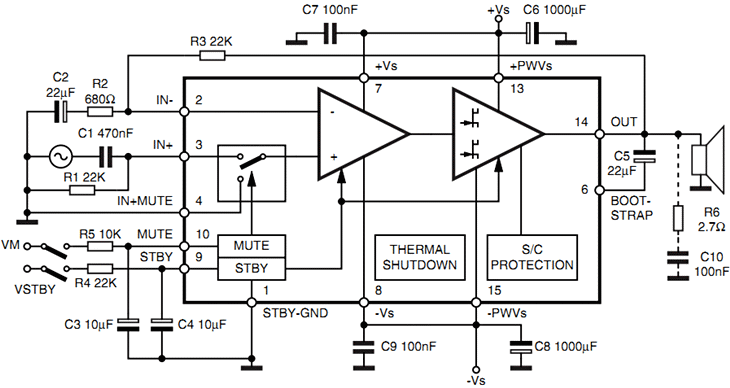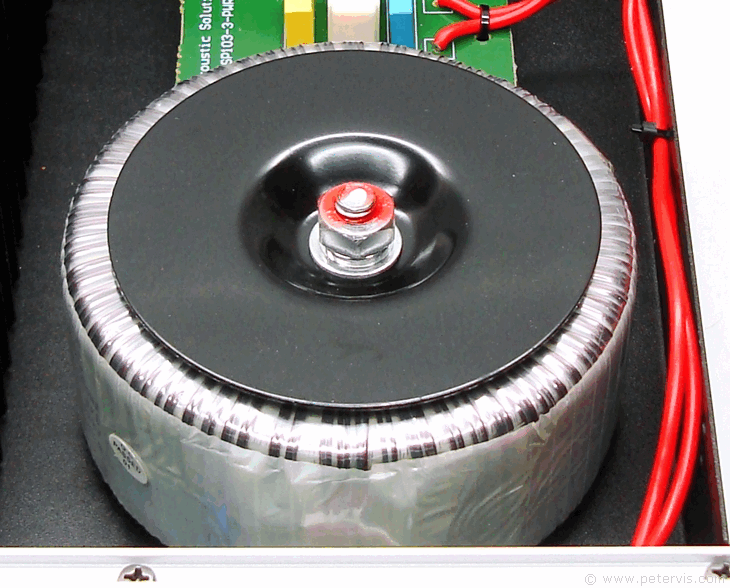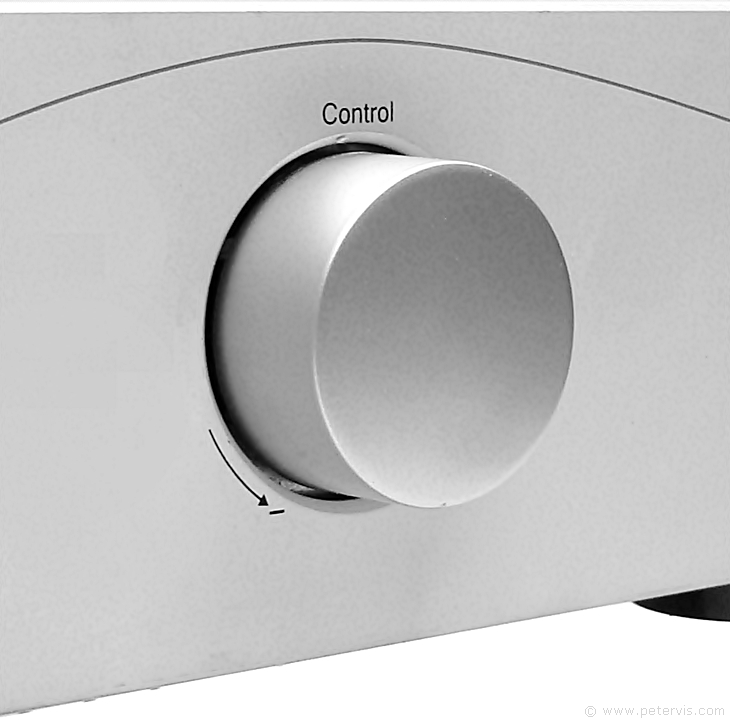Acoustic Solutions SP103


The SP103 was an integrated amplifier manufactured by the Acoustic Solutions Corporation under license in the People's Republic of China (PRC) in approximately 2007 (according to the date printed on the PCB). It was very similar in style to the earlier SP100 and SP101 amplifiers that were available at around 2003, with dimensions 430 mm × 230 mm × 80 mm. The SP103 had 40 W output with 4 Ω loads, or 30 W with 8 Ω loads. It also had remote control facility, though I have never been able to find a remote control for it to date. In this multi-page review, we look at some of its strengths and weaknesses including the electronic design.
Review

The power amplifier consists of a pair of TDA7296 ICs manufactured by the ST Corporation, and each IC is a 60-watt DMOS audio amplifier package operating in class AB mode. Interestingly, these DMOS power stages can have a high operating voltage range of ±35 V in a split-rail configuration.

From the block diagram, we can see that this IC has built-in standby and mute functions. It also has built-in short circuit protection and automatic thermal shutdown, thereby making it a very hardy power output stage. This part of the amplifier design is superb and consequently I figure there will be many amplifiers that will survive in the hands of us Brits. The sound quality of this IC is also very good with very low noise and distortion figures. Providing you use this amp with the supplied speakers, or the correct type of speakers the sound quality should be good.

This amplifier has a strange design, in that I could not figure out what the design goal was. On one hand, it has a wonderful toroidal transformer to provide smooth current to the power amplifier ICs, and this is exactly what audiophiles like. It also has a great preamplifier section including a phono RIAA preamplifier (for connecting record players), utilising the JRC455 series of operational amplifier ICs. However, for the volume, bass and treble controls, they introduced a digital user interface, with a LCD and a T9311DP microcontroller IC. The volume, bass and treble are set using the same encoder control, by first selecting the function. I thought all that was unnecessary electronics just to have a stylish front panel because it would have been cheaper and better to have a straight analogue design with mechanical controls. Therefore, this amplifier is really for those who want a stylish minimalist modern looking amplifier with the best sound quality possible.

According to the LCD readout, this amplifier provides ±14 dB of bass and treble cut/boost. Providing you have a good pair of speakers with crossovers, it is noticeable.
Price/eBay

When new, this amplifier was on sale at the Richer Sounds outlet, however pre-used amps are often for sale on eBay and the price can vary depending upon the condition. A unit in good mint condition can fetch a price of over fifty pounds and more, however a broken one that is burnt might go for a fiver. A replacement power output IC is still readily and cheaply available and therefore a cheap fix is possible for anyone in the amplifier repair trade. This multi-page article continues showing you the inside engineering and common repair issues.
This Article Continues...
Acoustic Solutions SP103SP103 Electronic Engineering
SP103 Amplifier Board
SP103 Front Panel
SP103 Repair
SP103 Back Connections
